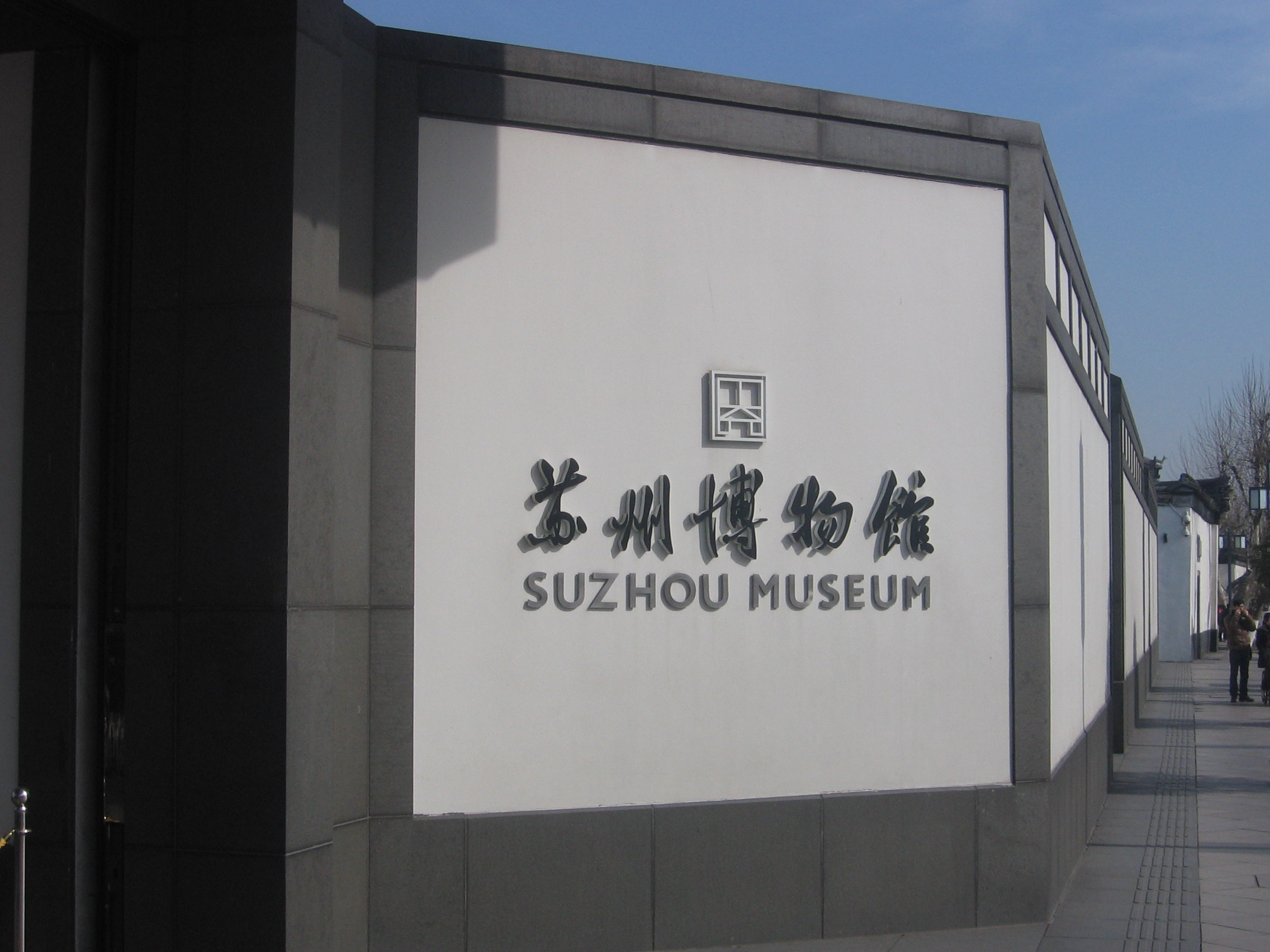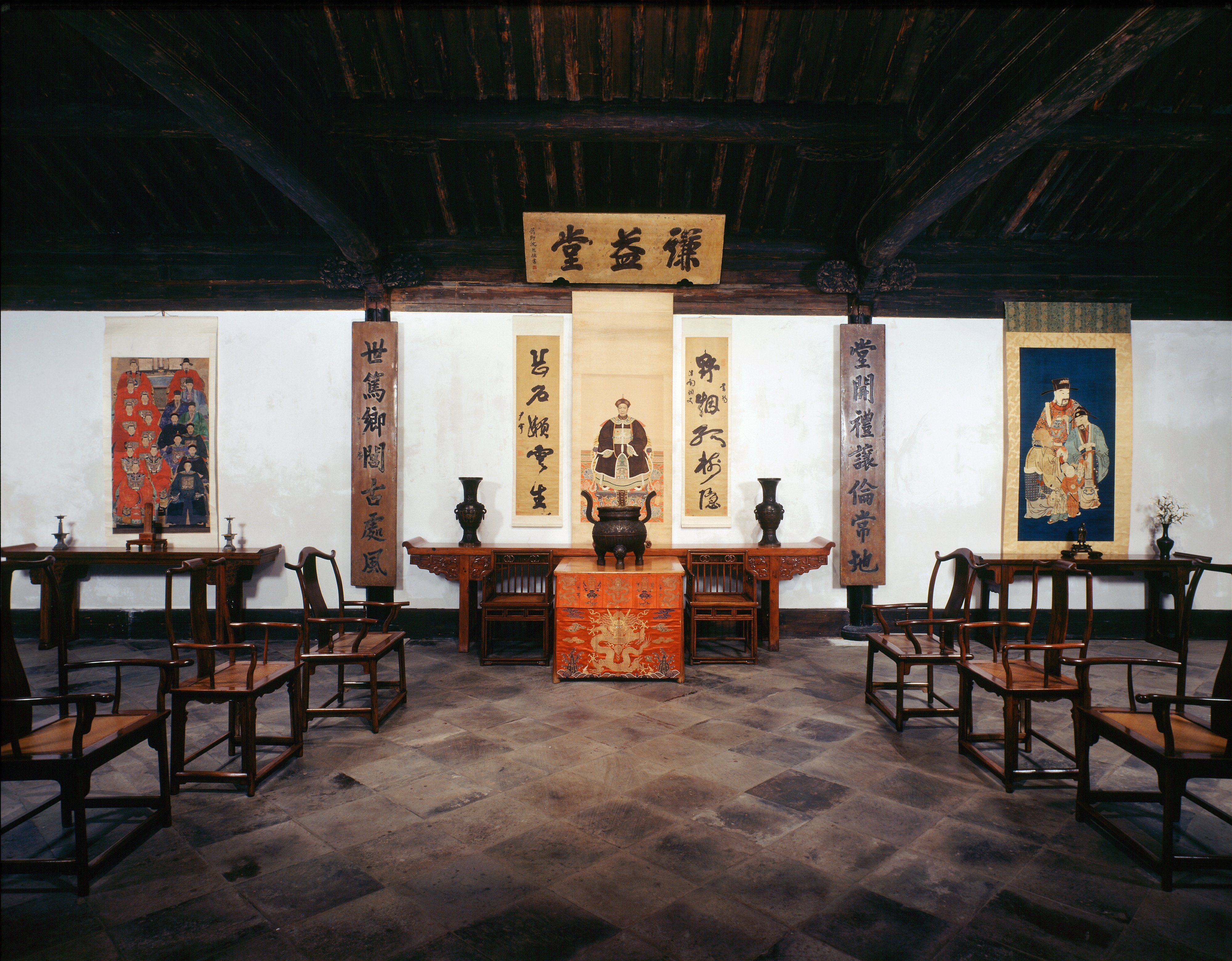Suzhou Museum on:
[Wikipedia]
[Google]
[Amazon]



 The Suzhou Museum () is a
The Suzhou Museum () is a

China Museums
Suzhou Museum at Google Cultural Institute
{{Authority control Museums in Suzhou I. M. Pei buildings 1960 establishments in China Museums established in 1960 Contemporary Chinese architecture National first-grade museums of China



 The Suzhou Museum () is a
The Suzhou Museum () is a museum
A museum ( ; plural museums or, rarely, musea) is a building or institution that cares for and displays a collection of artifacts and other objects of artistic, cultural, historical, or scientific importance. Many public museums make th ...
of ancient Chinese art
Chinese art is visual art that originated in or is practiced in China, Greater China or by Chinese artists. Art created by Chinese residing outside of China can also be considered a part of Chinese art when it is based in or draws on Chinese ...
, paintings, calligraphy
Calligraphy (from el, link=y, καλλιγραφία) is a visual art related to writing. It is the design and execution of lettering with a pen, ink brush, or other writing instrument. Contemporary calligraphic practice can be defined ...
and handmade crafts in Suzhou
Suzhou (; ; Suzhounese: ''sou¹ tseu¹'' , Mandarin: ), alternately romanized as Soochow, is a major city in southern Jiangsu province, East China. Suzhou is the largest city in Jiangsu, and a major economic center and focal point of trad ...
, Jiangsu
Jiangsu (; ; pinyin: Jiāngsū, alternatively romanized as Kiangsu or Chiangsu) is an eastern coastal province of the People's Republic of China. It is one of the leading provinces in finance, education, technology, and tourism, with it ...
, China. It is one of the most visited museums in the world, with 2,340,000 visitors in 2018. The Folk Branch of the museum is at the Bei family ancestral temple near Lion Grove Garden.
History
The Suzhou Museum was founded in 1960, originally located in the former residence of Zhong Wang, an important general during theTaiping Rebellion
The Taiping Rebellion, also known as the Taiping Civil War or the Taiping Revolution, was a massive rebellion and civil war that was waged in China between the Manchu-led Qing dynasty and the Han, Hakka-led Taiping Heavenly Kingdom. It last ...
. In 1986 the Suzhou Folk Museum, which later became the National Key Culture Relics Protection Unit, opened on the 2,500th anniversary of Suzhou's establishment. In 2006 the museum moved to its present location, a building designed by Suzhou-born Chinese-American architect
An architect is a person who plans, designs and oversees the construction of buildings. To practice architecture means to provide services in connection with the design of buildings and the space within the site surrounding the buildings that h ...
I.M. Pei. The new building covers an area of 10700 square meters along with a construction area over 19000 square meters. In addition to the renovation
Renovation (also called remodeling) is the process of improving broken, damaged, or outdated structures. Renovations are typically done on either commercial or residential buildings. Additionally, renovation can refer to making something new, ...
of Taipingtianguo Zhongwang Mansion, the total construction area reaches 26500 square meters, costing 3.39 million Chinese Yuan
The renminbi (; symbol: ¥; ISO code: CNY; abbreviation: RMB) is the official currency of the People's Republic of China and one of the world's most traded currencies, ranking as the fifth most traded currency in the world as of April 2022. ...
.
Collections
The combined exhibition areas of the museum cover approximately 3,600 square meters. The museum houses approximately 30,000 pieces, including unearthed cultural relics, ancient paintings andcalligraphy
Calligraphy (from el, link=y, καλλιγραφία) is a visual art related to writing. It is the design and execution of lettering with a pen, ink brush, or other writing instrument. Contemporary calligraphic practice can be defined ...
, and ancient crafts. It also possesses more than 70,000 books and documents and over 20,000 rubbings of stone inscriptions. The collection of paintings and calligraphy includes works of masters from the Song
A song is a musical composition intended to be performed by the human voice. This is often done at distinct and fixed pitches (melodies) using patterns of sound and silence. Songs contain various forms, such as those including the repetiti ...
, Ming
The Ming dynasty (), officially the Great Ming, was an imperial dynasty of China, ruling from 1368 to 1644 following the collapse of the Mongol-led Yuan dynasty. The Ming dynasty was the last orthodox dynasty of China ruled by the Han pe ...
, and Qing
The Qing dynasty ( ), officially the Great Qing,, was a Manchu-led imperial dynasty of China and the last orthodox dynasty in Chinese history. It emerged from the Later Jin dynasty founded by the Jianzhou Jurchens, a Tungusic-speak ...
dynasties.
The museum houses four permanent exhibitions: ''Relics of Wudi'', ''National Treasure of Wu Tower'', ''Wuzhong Fengya'', and ''Wumen Calligraphy and Painting''. The permanent collections display prehistoric pottery and jade
Jade is a mineral used as jewellery or for ornaments. It is typically green, although may be yellow or white. Jade can refer to either of two different silicate minerals: nephrite (a silicate of calcium and magnesium in the amphibole group ...
and Buddhist cultural relics from the Tiger Hill Yunyan Temple and Ruiguang Temple. The Suzhou History Exhibition takes visitors through the history of the Suzhou area, covering the Paleolithic
The Paleolithic or Palaeolithic (), also called the Old Stone Age (from Greek: παλαιός '' palaios'', "old" and λίθος ''lithos'', "stone"), is a period in human prehistory that is distinguished by the original development of stone too ...
Age, the Ming and Qing dynasties, and the Spring and Autumn Period when the settlement that would grow to become Suzhou was established.
The modern art exhibition has shown works by artists including Zao Wou-ki, Cai Guoqiang, and Xu Bing.
Architecture
The Suzhou Museum building was designed byPritzker Prize
The Pritzker Architecture Prize is an international architecture award presented annually "to honor a living architect or architects whose built work demonstrates a combination of those qualities of talent, vision and commitment, which has produ ...
-winning architect I.M. Pei in association with Pei Partnership Architects
PEI Architects, formerly Pei Partnership Architects, is an international architecture firm based in New York City. Co-founded by the sons of I. M. Pei, Chien Chung (Didi) Pei and Li Chung (Sandi) Pei, in 1992, PEI Architects has specialized in ...
. The structural engineering firm for this project was Leslie E. Robertson Associates. Construction began in 2002 and the building was inaugurated on October 6, 2006. The PBS American Masters
''American Masters'' is a PBS television series which produces biographies on enduring writers, musicians, visual and performing artists, dramatists, filmmakers, and those who have left an indelible impression on the cultural landscape of the ...
television documentary series chronicled the design, construction, and inauguration of the new museum in a 2010 episode entitled "I.M. Pei: Building China Modern".
Design philosophy
Pei designed the museum using a blend of traditional Chinese design, local Suzhou flavor, and modern design. The essence of the old city is apparent in the sloping roofs; a traditional color palette of black, white, and gray; and traditional whitestucco
Stucco or render is a construction material made of aggregates, a binder, and water. Stucco is applied wet and hardens to a very dense solid. It is used as a decorative coating for walls and ceilings, exterior walls, and as a sculptural and a ...
walls. The materials and construction give the building a modern feel. These include glass incorporated into the roof, a steel structure that replaces traditional wooden beam and rafter framing, and "China black" granite roof tiles instead of traditional brick tiles. The stone and glass roof admits natural light, which is regulated by metal sunshades.
Landscaping
The museum is placed between courtyards to harmonize the building with its surrounding environment. Pei designed a central courtyard and several small inner courtyards to complement the structure of the museum. The main courtyard is a creative landscape garden surrounded on the west, south, and east sides by the museum structure. The north side of the courtyard abuts the Humble Administrator's Garden, the largest of Suzhou's classical gardens. The main courtyard was described as the most painstakingly designed of the museum's courtyards, and it contains pebbled ponds, straight and winding bridges, octagonal pavilions, and a bamboo forest.Use of geometric figures
Pei used simple geometric shapes such as octagons, rhombuses, and triangles as the building blocks of the museum's design. The atrium and several halls take an octagonal shape, and some windows are in the shape of rhombuses. The roofs and ceilings are a patchwork of triangles, rectangles, and rhombuses, which differentiates the structure from the traditional Suzhou buildings surrounding the museum.See also
*List of museums in China
, there are 3,589 museums in China, including 3,054 state-owned museums (museums run by national and local government or universities) and 535 private museums. With a total collection of over 20 million items, these museums hold more than 8,000 e ...
References
External links
*China Museums
Suzhou Museum at Google Cultural Institute
{{Authority control Museums in Suzhou I. M. Pei buildings 1960 establishments in China Museums established in 1960 Contemporary Chinese architecture National first-grade museums of China